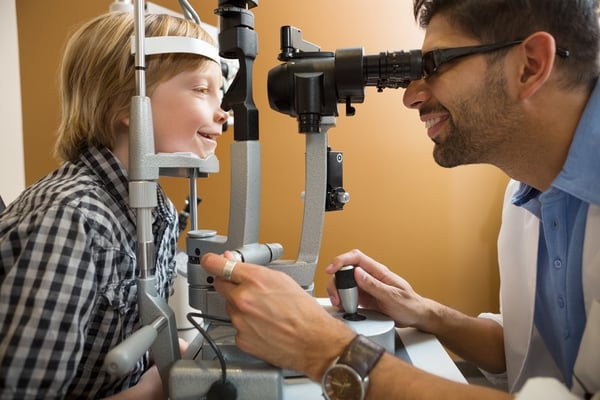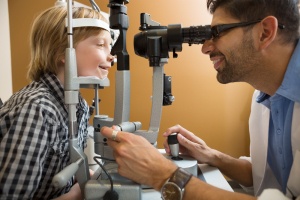August is Children's Eye Health and Safety Month! This is a terrific time to consider an eye exam for your little ones. Most children have eye assessments when they're newborns and basic checks given by pediatricians as they grow. However, it's important to go beyond these first tests, as more than two million children in our country have undiagnosed vision problems.

Adults often think their child will tell them if he or she is having vision problems. But until they put on glasses and see the difference for themselves, many children don't realize they're having difficulties with their sight at all. They may also have physical symptoms, such as headaches. Consider these signs that your child may need an eye exam.
1. Squinting
This is perhaps the most obvious symptom of a vision issue. Squinting has an effect similar to looking through a pinhole. The image is made smaller on the retina, which can make it easier to see. If your child often squints while looking at distant objects, he or she may be trying to compensate for poor vision.
2. Closing or covering one eye
Most people with vision troubles have one "better" eye. Closing one eye, or covering it, helps mitigate the effects of the "worse" eye and makes reading or watching television temporarily easier. It's a clear sign you should consider taking your child to an eye doctor for a check.
3. Tilting the head
Vision troubles sometimes manifest in the form of double vision. This can indicate imbalances with the eye muscles. Tilting the head can help minimize the double vision effect. Watch your child's posture when he is watching something intently. If his or her head is frequently tilted, an eye exam might be a good idea.
4. Headaches or eye rubbing
Strained eyes make for a strained head. The effort of focusing or clearing blurry vision often causes headaches along the front of the head, or the brow. Also, when a child's eyes get tired from overworking, he or she is likely to rub her eyes.
5. Holding objects close to the face
Children with vision problems often hold their books very near to the face, in order to see clearly what they are reading. They may take a place very close to the television or computer screen to help them experience what they're doing in focus. School-age children may need to sit closer to the front of the class at school if they're coping with vision difficulties.
6. Reading with a finger as a guide
For some children, using their finger to trace along the line they're reading is simply an aid to the process. Others, however, this action is also used to make up for eye troubles, which can make words and letters appear too crowded on the page.
Make Sure to Make Annual Appointments With an Eye Doctor
Vision problems can have more impact on your child than just troubles seeing. Undiagnosed vision issues can contribute to lower grades and difficulties with reading. A child might try to avoid reading time, which can create poor behavior and frustration.
Experts advise yearly appointments with a trained eye doctor. If you haven't used one before, ask your pediatrician for recommendations. Give your children the blessing of good vision this month by making them an appointment! You may be giving them a clearer, brighter world.





